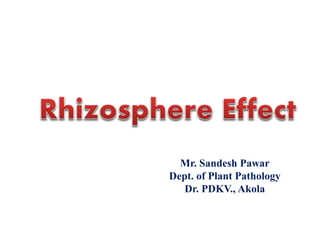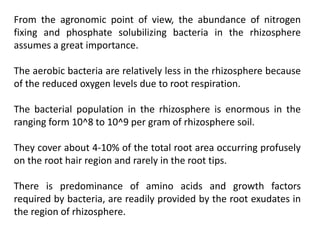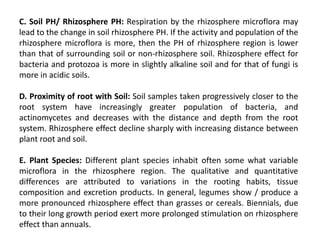The document discusses the rhizosphere region as a critical habitat for various microorganisms, detailing the methods for enumerating and analyzing microbial populations, particularly focusing on bacteria, fungi, actinomycetes, protozoa, and algae. It highlights the impact of soil type, moisture, plant species, and root exudates on the diversity and abundance of the microbial community in the rhizosphere. The findings underscore the importance of root exudates in influencing microbial dynamics and the environmental factors affecting these interactions.











